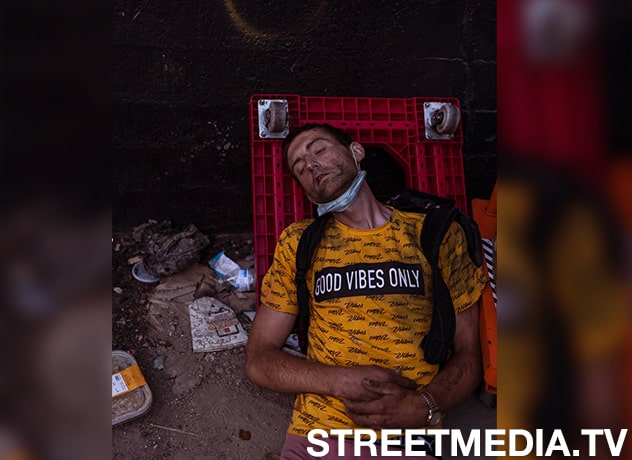Los Angeles’ Dangerous Fentanyl Zombies Roam The Streets

Recently, a video went viral online showing a man coming across a homeless woman with a large scab on the back of her neck that she was picking. Some people have dubbed her a “zombie” and claimed that this is a product of the fentanyl crisis in America.
While the video may be disturbing to some, it is important to approach this situation with empathy and understanding. Homelessness is a complex issue, and many people who find themselves on the streets struggle with addiction, mental illness, or other challenges that make it difficult to access the resources and support they need.
The use of the term “zombie” to describe this woman is also concerning. It perpetuates harmful stereotypes about people who use drugs and can stigmatize those who are struggling with addiction. It is important to recognize that addiction is a medical condition that requires treatment and support, not judgment and condemnation.
Fentanyl is a synthetic opioid that is used medically to treat severe pain, particularly in cancer patients. It is similar to morphine but is much more potent, with a potency that is up to 100 times greater than that of morphine. This means that even a small amount of fentanyl can have a profound effect on the body, causing respiratory depression, coma, and even death.
Fentanyl is often prescribed in the form of a transdermal patch, which releases the drug slowly over a period of several days. However, it can also be administered through injection or as a pill or a lozenge. In recent years, illicitly manufactured fentanyl has become more prevalent on the streets, often being mixed with other drugs like heroin or cocaine.
The rise of fentanyl has contributed to a significant increase in overdose deaths in the United States. According to data from the National Institute on Drug Abuse, there were over 36,000 overdose deaths involving synthetic opioids like fentanyl in 2019, which represents a 38% increase from the previous year. Fentanyl has surpassed heroin as the leading cause of opioid-related deaths in the United States.
One of the major reasons for the rise of fentanyl is its potency and the fact that it can be easily synthesized in a laboratory. This means that drug dealers can produce large quantities of the drug relatively easily and cheaply, making it a popular choice for those looking to make a profit in the illicit drug market.
Another reason for the rise of fentanyl is the fact that it is often mixed with other drugs like heroin or cocaine. This makes it even more dangerous and unpredictable, as users may not know exactly what they are taking or how much fentanyl is in the drug they are using.
The fentanyl crisis in America has been a devastating and ongoing issue, with thousands of people dying each year from overdose. Fentanyl is a synthetic opioid that is much stronger than heroin and can be deadly even in small doses. It has been a major contributor to the opioid epidemic in the US and has had a significant impact on public health and safety.
However, it is important to avoid making sweeping generalizations about people who use drugs or assuming that everyone who is homeless is struggling with addiction. Each person’s situation is unique, and it is important to approach each individual with compassion and understanding.
Instead of stigmatizing or marginalizing those who are struggling with addiction or homelessness, we should focus on addressing the root causes of these issues and providing resources and support to those in need. This includes improving access to healthcare and mental health services, providing affordable housing options, and working to reduce the stigma surrounding addiction and mental illness.
In conclusion, while the video of the homeless woman with a large scab on the back of her neck may be unsettling to watch, it is important to approach this situation with empathy and understanding. The fentanyl crisis in America is a serious issue that requires attention and action, but it is also important to avoid perpetuating harmful stereotypes and to recognize the complexity of homelessness and addiction. Let’s work together to address these issues and create a more compassionate and equitable society for all.



